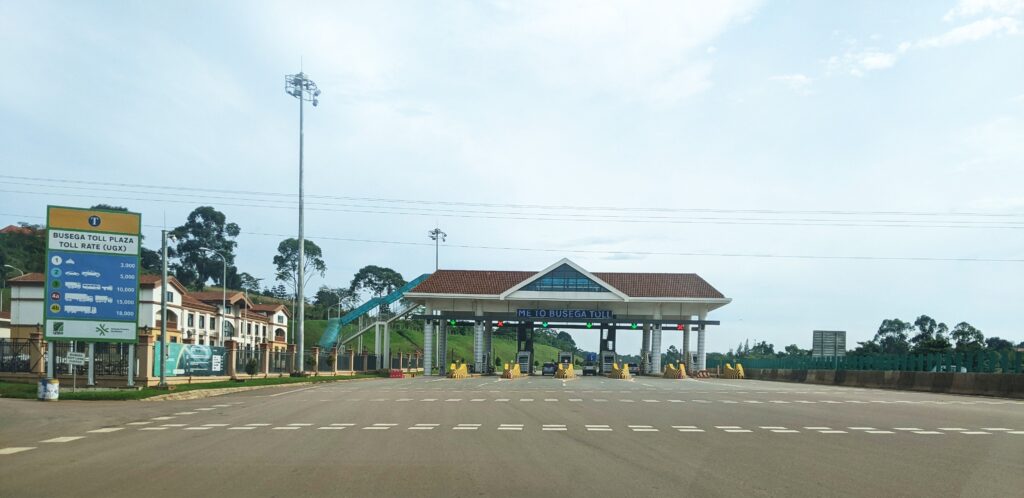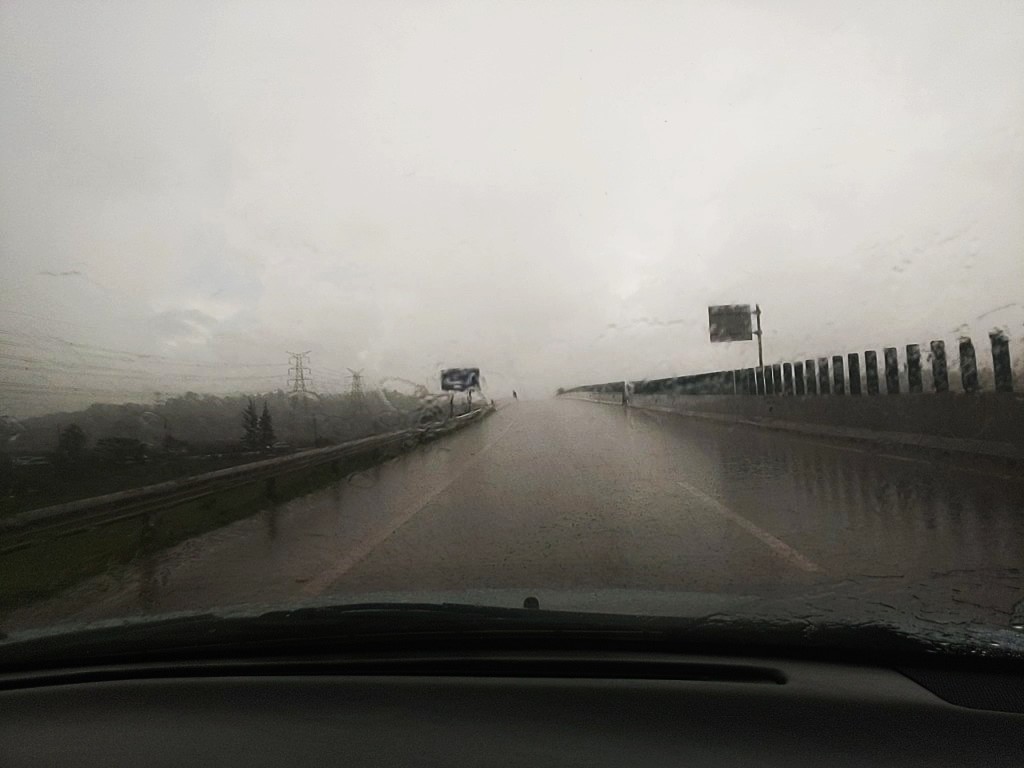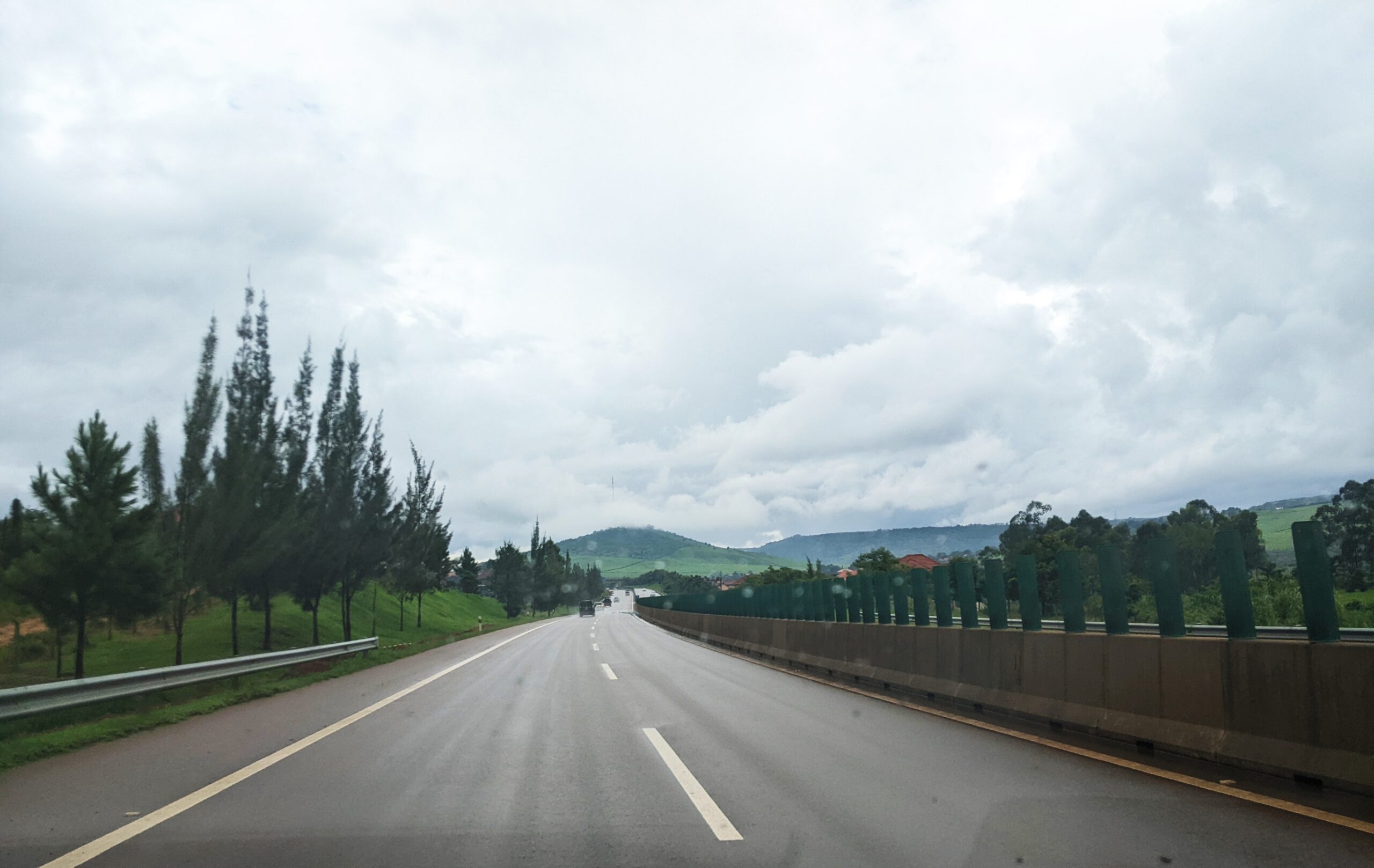Without due consideration to the possibility of suffering some unpleasant consequences along the way, Ugandans enjoy thrill. But with the knowledge that our median age stands at about 16 years, you might cease to wonder why this youthful demographic make personal endangerment seem like a virtue. Unlike their senile counterparts, these youngsters hardly, if they ever do, fear danger! After all, in this electrifying journey of life, nobody’s coming out alive!
The duration of your journey from Uganda’s capital to Entebbe will be trimmed by half should you choose to use the expressway. The Kampala-Entebbe Expressway is a 51-kilometer dual-carriage toll road that links Kampala and it’s catchment areas to the country’s largest airport situated down south. The highway cost in excess of a whooping $470m, and has been operational for close to five years now, with monthly vehicular traffic in the tens of thousands.
Not only is it a preferred route for motorists that don’t fancy the idea of getting bogged down by snarl-ups and chaotic Boda bodas on the old toll-free Entebbe road, but the expressway also appears to be the ideal way for speed merchants and travelers that enjoy the thrill of making it onto their soon-departing flight at the eleventh hour! Despite the convenience that it avails, the cloud on the horizon has been the spate of grisly motor accidents occurring on this highway!

Perhaps the first prominent incident to have highlighted the danger of this road was the crash that claimed the life of the CEO of Galaxy FM, a local radio station, who perished sometime in October last year. The most recent that raised a bit of a furore was late March when an NTV-Uganda reporter is said to have lost control of his car and veered off the road before flipping a couple of times in the air and—so on and so forth the story goes!
The circumstances surrounding these incidents are often shrouded in mystery, as there are no CCTV installations along the highway; neither is there traffic police deployment. More often than not, investigations heavily rely on hearsay from eyewitnesses who, like the typical Indian action-movie director, will have zero qualms juicing up the already dramatic and tragic story, and driving it to whichever direction they please. While the incident reports by traffic police are usually less precise, there’s a litany of things that have contributed to this highway lapsing into a death trap.
A week ago on a warm Sunday morning, I’m readying myself to be on my way to Entebbe to see a friend of mine. Our meeting is scheduled for 12:30pm. At 10:50am, I set out estimating that in about an hour moving at normal pace, I should be in Ebbs by noon. Twenty minutes later, I’m approaching the Busega toll gate. At the entry point, you’ll pay the equivalent of something between $1.5 and $4, depending on the class of your automobile. Sorry, bicycle-mobiles aren’t allowed here! Sometimes it gets a bit dramatic when there’s many vehicles approaching the toll gate at once.
With six booths at your disposal, you’re almost spoilt for choice. Sort of like a kid standing in front of six tins of candy, but they’re supposed to pick a single piece from only one tin. So, you’ll occasionally see an indecisive motorist weaving from this end to the other at the last minute, before they finally settle for which booth they’ll drive through. Unfortunately, you’ll not be getting any candy at the gate! This meandering syndrome might be the reason the road’s administration decided that, at any one time, no more than four booths shall be operational. That could be just an excuse, though. At times it’s so bad, only two entrances are open regardless of the volume of traffic going through. There goes your recipe for an unexpected traffic jam!
Anyway, like it is at all the other three gates, there’s a road safety announcement for the motorists to pay attention to, and it’s being broadcast on a public address system. First, and foremost, is that the speed limit on the highway is 100kph. Secondly, you’re cautioned to stay on the left lane unless overtaking.
In all fairness, you would have to be deaf not to hear this clear announcement, dumb not to understand it, and blind not to see another massive sign, one kilometer from the toll gate, reminding you of the same exact thing that was said a minute ago! But, alas, everyday you get a new reason to be persuaded that we’ve got a ton of deaf, dumb and blind motorists on our roads. This further cements that unwritten golden rule amongst drivers by which you should abide for your safety–every motorist is mad, except yourself!
The weather has changed drastically and a great storm has descended. It’s not long before I come across the first nutcase! Some 100 meters ahead is a blue VW Touareg cruising at approximately 80kph, which’s slightly slower than me at 100kph. The gap between us is gradually shrinking. However, for no apparent reason, the VW is comfortably stuck on the right-hand side—the fast lane! They’re directly in my path! One of the things I was taught in driving school is that if you need to catch the other road user’s attention, you flicker your headlights. That’s what I do while using my turn-right signal, so that this person will hopefully notice and drift over to the slow lane, because I need to safely pass them. In less than a minute I’m literally at their tail; flashing my lights, signaling right, and now even tapping my horn!

The outer lane is completely blank. Why then won’t I simply pass on the left and move? You see, the dynamics of driving on a rainy day are quite different than normal. Regardless, doing that is probably riskier than you think–and I’ve previously had a near crash performing a left-side maneuver. Thing is, with large puddles of water collecting over the road and blasts of mist gushing into your screen from the undercarriage of the vehicle ahead, visibility is poor for the both of us. I can barely see what’s ahead, and their peripheral vision isn’t great either. Also, since they’re unfazed by my communication, this seems to me like the type that will suddenly swerve to the other side unannounced.
This is the risk I took, though, and, thankfully, without incident. As I passed this lady who was in the company of another female in the co-driver’s seat, my courteous attempt–or at least I thought it was–to alert her of her dangerous manner of road usage wasn’t fruitful as she literally turned her head to face the other side. On that note, I whizzed forward and made sure to move as far ahead as possible lest I become a statistic of a grave mistake she could potentially make. That’s a self-taught safety tip—keep as far away from mad people as you possibly can!

The Entebbe Expressway is, without doubt, one of the smoothest stretches of track in the country. That, coupled with the absence of speed enforcement measures ensures that your indiscipline of falling into the deadly prongs of a drag race is regularly indulged. Moreover, the temptation to try and replicate Louis Hamilton’s merchantry has never been more tantalizing. However, that Formula-1 approach to driving on public roads could very well be how you’ll earn your first-class ticket to go meet your ancestors!
My car weighs about two tons. In spite of that, as you progress above 100kph, the steering wheel starts to feel weightless. You then get this sense that anytime now, you’re approaching that point where a slight distraction could cause you to get airborne. Even so, still you’ll find an extremely brave motorist flying past you at 130kph, and they’re driving a one-ton Toyota IST. This happens everyday, all the time!
Overall, regardless of the size of vehicle, it’s probably easier to keep the car you’re driving under control if you don’t overrate it but, rather, understand its mechanical state and limits. If you stick to the correct lane and aren’t slaloming all over the road, that would be great too; not just for you, but for the safety of other road users as well.
On the other end of the spectrum, the roads authority could do more to improve the safety rating of the highway. Using this fast road in the night or on a stormy day is just about the same as driving with eyes half closed. Whereas we mostly rely on our headlamps and the illumination that comes from the occasional bright nights, the light that glims off the moon is sometimes dim and, so, the roads authority could do its part by ramping up some artificial lighting installations. Additionally, the reflectors that once lined the lane separators, the outer edges of the road and the concrete barriers, long vanished like the Chwezi ghosts.
Without the actualization of measures at both individual driver-level and administratively, the highway’s safety record might eventually dwindle to a trickle, and in that day, we’ll recommend that the Entebbe Expressway be renamed the Expressway to the afterlife, for all the carnage it has hosted!
Follow the conversation on X:
Hahaha Em, “If we die we die” – some things are worth dying for… But not the high way though! See history was made!
Haha Prossy, yeh! If I die, I die! Surprisingly, I didn’t come anywhere close to dying! Myself I was shocked!
We often drive behind you on the Express way while heading back to the City…I have noted your strict adherance to traffic rules. That said, could you continue- in another episode- your opening of the ‘risk story’😉
haha Dave, didn’t know you do! Well, for a high-speed road, anything less than adherence is reckless!
I’m not repeating that intro anywhere.